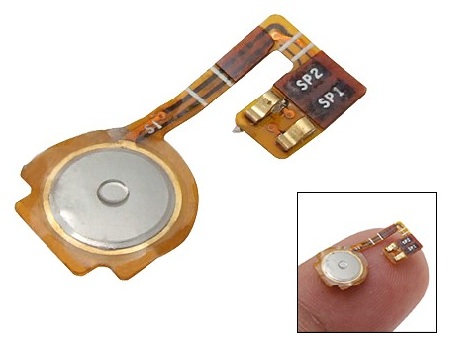 The “home” button
The “home” button
Apple has designed the iOS devices (iPhone, iPad and Touch) with a single physical button for navigation: the round “home” button.
When you press the home button, the concave surface “clicks” down on a spring. This physical behavior transmits important information to your brain, starting with the nerves in your fingertips. It says: “You have made something happen.” (By contrast, swiping or tapping the touch screen gives no such physical feedback. In computer terms, the touch screen lacks haptics.)
It’s no accident that Apple has reserved this physical feedback for a very important function: launching the Finder or home window – the primary graphical user interface for the device.
But because the home screen is also the first screen a user sees, pushing the home button can be perceived as returning to a prior state or “going back.” That Apple relies on a visual metaphor of zooming in and out of windows only re-enforces the notion that the user is going in and out or forward and backward.
Aza Raskin wonders if this behavior – click home, jump back – should be expanded to include a new case: if you’re using an app and you push down hard on the home button you can still jump back to the iOS home screen. But if you push the home button softly (a half-step, as with the shutter in electronic cameras), you could take a single step back – to the app’s home screen.
John Gruber, through whom I read Raskin’s argument, disagrees. Gruber argues that Apple should retain exclusive use of the home button for engaging the Finder. He’s right insofar as Apple has good reason to give users a simple and unambiguous way to quickly exit an app and/or load another one.
But I wonder if as apps become more complicated and immersive (e.g., office tasks, games) we won’t want a deeper, more physical relationship with the iOS interface. As its functionality increases, we’ll start to really miss the information that can be relayed via the feedback of tactile buttons and keys.
For years, Apple resisted consumer pressure to add a second button to its mice, the ancestors of the iOS “home” button. Eventually, it introduced multi-button functionality under a single continuous surface.
Apple has already begun exploring technologies that would give its iOS devices a tactile screen using piezo actuators instead of springs. Thus, instead of adding one or two buttons, it would offer as many click-able buttons as the user might appreciate; no more and no less.
previously on the complexity of iPhones as artifact, augmented reality in practice and in theory.